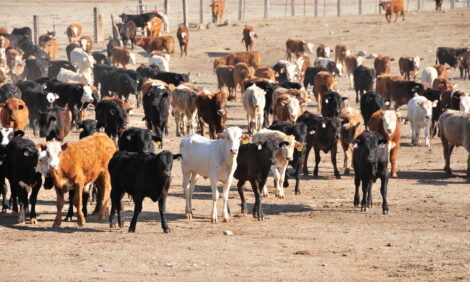



Beef Finishing And The Meat Processor's Dilemma
US - Beef has historically set itself aside from other proteins that battle to make it to your plate by demanding a premium for quality, says Ryan Cox, University of Minnesota Beef Team.
In fact, that is largely how beef is marketed in this country, with a scale set for quality as it pertains to both marbling and animal age.
This is designed to ensure a better eating experience for higher priced, more marbled cuts, and value still gained from the lower marbled, leaner grades.
Therefore, the cattle industry has largely targeted the highest quality possible within a reasonable yield grade to continue to see a profit.
Therefore, we see upwards of 60 per cent of the finished beef in this country grading USDA Choice.
That said, we are in an interesting period in our history, where this model may not be 100 per cent applicable.
One needs only to view the USDA Meat Carlot Report for any week and see that large packing plants are no longer levying carcase discounts for larger carcases.
In fact, carcase discounts are not typically levied until it reaches above 900 lbs.
Additionally, only minimal discounts are seen for carcases up to 1,000 lbs.
This calculates to a market animal that could potentially weigh almost 1,500 lbs, a good bit heavier than what many consider a reasonable market weight.
And this trend appears to not be slowing any time soon.
Large commercial processors, while concerned with quality, still rely on the bottom line and that means higher yields per animal unit.
Moreover, feedlots will continue to market at these higher weights because it is economically rewarding and no discounts are seen at the packer.
So what is this doing to our beef?
As an animal gets larger, so do all of its parts, and on average, a 900 lb. beef carcass equates to a ribeye greater than 14 square inches.
This is a good bit larger than most of the 11 or 12 square inch ribeyes on which we currently base most of our portions.
Say, for instance, a restaurant is marketing a 10-ounce ribeye steak.
As ribeye areas get larger, it becomes necessary for the portioning processor to cut those steaks thinner and thinner to meet the weight range.
And with a thinner steak, research has shown that tenderness, flavor and juiciness all decline from a sensory perspective.
Additionally, these thinner cuts are more difficult to cook and are more prone to overcooking.
So simply put, larger ribeyes are detrimental to the eating quality of beef.
Perhaps just as important, if not more important, is the changing demand of the modern beef consumer. This is a multi-faceted challenge with several key factors to consider.
The first is portion size as it relates to price. Very largely, the modern consumer no longer evaluates price per pound when considering the purchase of any meat product. The final unit price is really the only factor.
Therefore, whether it is at retail or in a restaurant setting, we have seen a slow decline of the T-bone and porterhouse steaks.
These cuts are typically heavier and also set at a premium and thus their unit price is much higher than their counterparts.
If this is compounded with a challenging economic environment, much like the one the consumer is facing today, then purchase of these large cuts will continue to diminish. More favoured are the smaller, more price friendly cuts.
Second, the diet conscious consumer is aware of portion as it applies to total daily intake. The FDA currently recommends a 5.5 ounce portion of meat and beans per day. Therefore, a larger muscled cut would have to be cut unacceptably thin in order to meet this portion.
Again, in the long run, this would actually decrease consumption of beef due to poor eating experience. Much more favoured would be a muscle with smaller area cut to an appropriate thickness.
Last, but certainly not least, is the concept of convenience.
In our modern households, very commonly with dual incomes, the meal preparer is often not available to cook the evening meal until after 5:30 p.m.
As a result, we have seen a decline in the sales of roasts or larger cuts that take longer to prepare.
Instead, the consumer is demanding shorter preparation times and convenient preparation methods. This trend favours the smaller beef cut and reserves the larger steaks and roasts for special occasions.
And so there appears to be a dichotomy in the way that we are finishing and processing cattle and the consumption trends of our modern consumer.
Luckily, the industry has been well aware of this trend for a number of years and steps are being taken to provide alternative methods of marketing.
The Beef Checkoff has certainly seen success with this type of approach in the Beef Value Cuts.
These cuts have come from traditionally larger roasts and provide the consumer with a smaller portioned steak that is convenient to prepare.
More recently, the Beef Checkoff has provided the Beef Alternative Merchan-dising programme (BAM). This alternative approach to fabrication of beef middle meats may provide the consumer with an alternative to the lager portioned steaks.
Utilising a similar method as the Beef Value Cuts, this approach considers individual muscles for market as steaks.
Additionally it utilises alternative fabrication of the loin muscle to smaller areas to answer both the large ribeye concern as well as the smaller portion size.
The BAM programme is certainty not meant as a replacement to our traditional preparation of steaks; however, it may give the processor the opportunity to put whole muscle beef cuts on the consumer's plate at a higher frequency.
For more information about Beef Alternative Merchandising, please visit www.beefretail.org.


